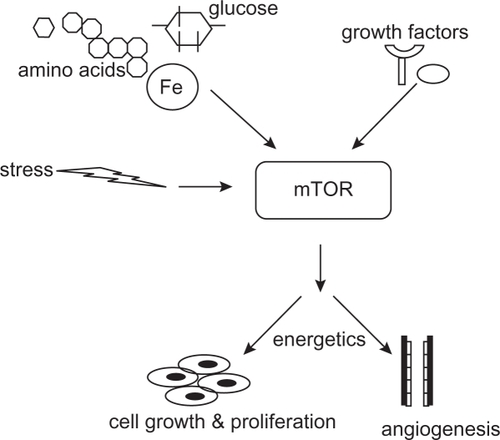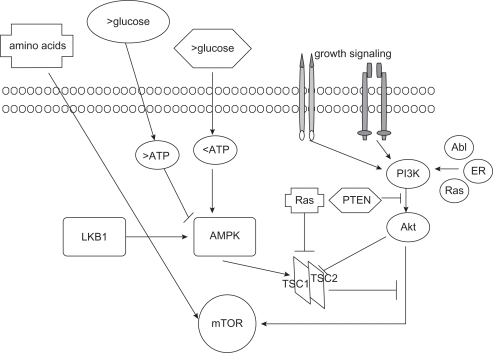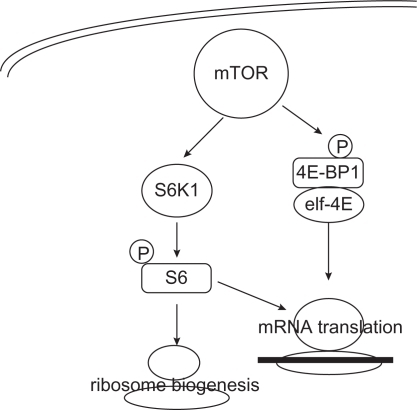Figures & data
Figure 1 mTOR as central regulator of the cell nutrition and growth. Conditions outside of the cell, such as nutrient and energy levels, growth factors, hormones, and stressful conditions, control the mTOR activation. After activation, mTOR stimulates cell growth, increases angiogenesis, and responds to bioenergetics necessities.

Figure 2 mTOR upstream pathway. Amino acid, glucose levels, growth factors, and genes, such as Bcr-Abl and Ras, induce activation of the PI3K/Akt pathway and consequently of the mTOR. The Akt pathway is inhibited by PTEN and LKB1 through the TSC1–TSC2 complex.

Figure 3 mTOR downstream pathway. mTOR activates the kinase activity of S6K1 and mediates the release of eIF4E translation initiating factor, thus regulating the synthesis of proteins involved in growth, proliferation, survival, angiogenesis, and bioenergetics.

Table 1 In vitro activity of mTOR inhibitors on MCL cell lines: relevant data from literature
Table 2 Temsirolimus in MCL patients: results from clinical trials